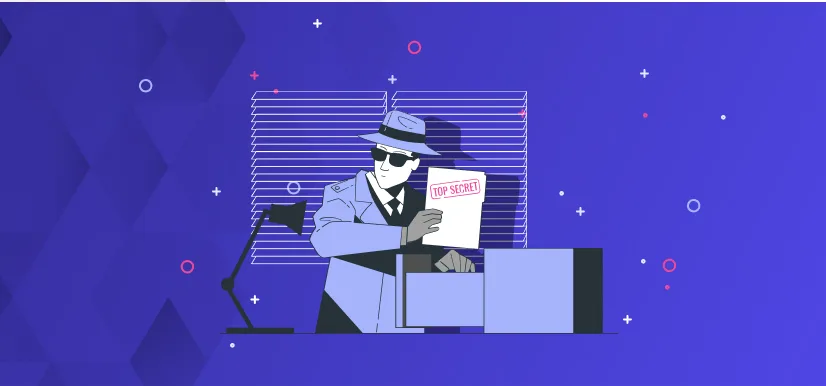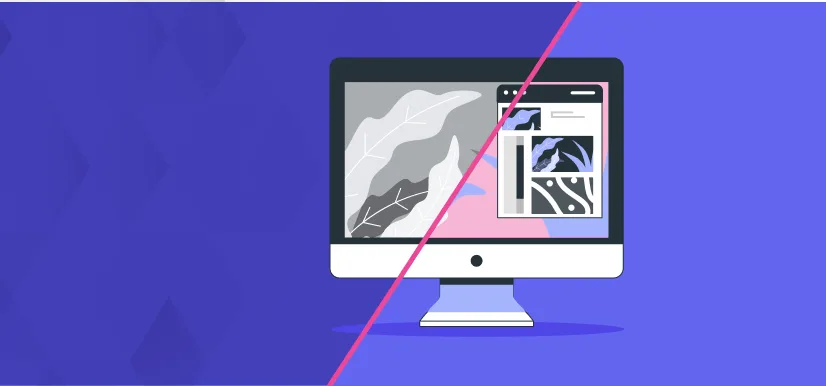- Growth
B2B SaaS: Everything You Need to Know in 2024


In today's fast-paced and ever-changing business landscape, companies constantly seek ways to improve their operations and stay ahead of the competition.
One of the most significant developments in recent years has been the rise of Software as a Service (SaaS). While SaaS has been around for some time, its adoption in the B2B sector has grown exponentially in recent years.
According to Gartner, as of 2023, the SaaS space is worth over $195 billion.
Another research found that the SaaS industry has increased in size by around 500% over the past seven years.
In this blog post, we will delve into everything you need to know about B2B SaaS in 2024, including its benefits and challenges, common categories, and the future outlook for this rapidly evolving industry.
Whether you are a seasoned SaaS user or just getting started, this post will provide valuable insights to help you stay ahead of the curve.
What Is SaaS?
SaaS, also known as Software as a Service, is a software distribution model in which a third-party provider hosts applications and makes them available to customers over the internet.
By using SaaS, customers can access software applications without having to install and maintain them on their own computers or servers, which can save them time and resources.
The third-party provider is responsible for ensuring the software is up-to-date and running smoothly, as well as providing customer support. This allows businesses to focus on their core activities without worrying about the technical aspects of maintaining software.
Furthermore, SaaS providers often offer flexible pricing models that allow businesses to only pay for the software they use, making it a cost-effective solution.
Overall, SaaS is a popular choice for businesses of all sizes looking for a hassle-free way to access and use software applications.
What Is B2B Saas?
B2B SaaS, or Business-to-Business Software as a Service, is a software distribution model where a third-party provider hosts applications and makes them available to other businesses over the internet. This allows businesses to access software applications without having to install them on their own computers or servers.
B2B SaaS providers offer software solutions that cater to the specific needs of other businesses, such as productivity tools, financial management software, and marketing automation software.
What Are the Similarities and Differences Between B2B SaaS and B2C SaaS?
B2B SaaS and B2C SaaS share many similarities, such as both being cloud-based software solutions that can be accessed remotely over the internet. However, there are also many differences between the two that are worth exploring.
One of the most obvious differences between the two is their target audience. B2B SaaS is designed for businesses and organizations, while B2C SaaS is designed for individual consumers. This means that they have different feature sets, pricing models, and even user interfaces. In general, B2B SaaS solutions are more complex and feature-rich, offering tools and functionalities that are geared toward businesses. On the other hand, B2C SaaS solutions are more user-friendly and accessible, with a focus on individual consumers.
Another key difference between the two is their pricing models. B2B SaaS solutions are often priced on a subscription or licensing model that is tailored to the needs of businesses. This means that they may have different pricing tiers or packages, with different levels of access and features depending on the size and needs of the business. On the other hand, B2C SaaS solutions are often priced on a per-user or per-month basis, making them more accessible to individual users.
In terms of their feature sets, B2B SaaS solutions often have more complex and customizable tools and functionalities. This is because they are designed to meet the specific needs and workflows of businesses, which can vary greatly depending on the industry and size of the organization. B2C SaaS solutions, on the other hand, are generally less customizable and offer a more standardized user experience. This is because they are designed with individual consumers in mind, who may not require the same level of customization as businesses.
Overall, while there are similarities between B2B and B2C SaaS, the two serve different markets and have different pricing models and feature sets to reflect those markets. Understanding these differences is essential for businesses and consumers alike who are looking to choose the right SaaS solution for their needs.
Benefits of SaaS Products in B2B Landscape
Accessibility
SaaS products offer a high level of accessibility for businesses of all sizes. Because the software is hosted on the cloud, it can be accessed from anywhere with an internet connection. This means that businesses can work remotely and collaborate with colleagues in different locations.
Additionally, SaaS providers often offer mobile apps, making it easy for employees to work on-the-go or from their personal devices.
Overall, the accessibility offered by SaaS products makes it easier for businesses to work more efficiently, regardless of their location or the devices they use.
Cost-Effectiveness
One of the major advantages of using SaaS products in a B2B landscape is their cost-effectiveness. Traditional software solutions often require a significant upfront investment in hardware, software licenses, and IT staff to maintain and update the system.
In contrast, SaaS solutions are generally priced on a subscription or licensing model, which means businesses only pay for what they need and can scale their usage up or down as required. This allows businesses to save money on upfront costs and reduce ongoing expenses related to maintenance and upgrades.
Furthermore, because SaaS providers are responsible for maintaining the software and ensuring it runs smoothly, businesses can save on IT staff and infrastructure costs.
Overall, the cost-effectiveness of SaaS products makes them an attractive option for businesses of all sizes, particularly those with limited budgets or IT resources.
Easy Updates and Feature Additions
SaaS products offer easy updates and feature additions, which is a significant benefit in a B2B environment. Because the software is hosted on the cloud, updates are automatic and require no additional effort from the user. This means that businesses can stay up-to-date with the latest features and functionality without having to spend time and resources on manual updates.
Additionally, SaaS providers often release new features and updates on a regular basis, which means that businesses can take advantage of the latest technology and stay ahead of the competition. This is particularly important in fast-moving industries where being able to adapt quickly to changing circumstances can be a significant competitive advantage.
Overall, the easy updates and feature additions offered by SaaS products make them a valuable tool for businesses looking to stay ahead of the curve and take advantage of the latest technology.
Privacy and Security
SaaS products offer businesses a high level of privacy and security. Because the software is hosted on the cloud, SaaS providers are responsible for ensuring that the software is secure and that customer data is protected. This can be particularly valuable for businesses that handle sensitive data or operate in highly regulated industries.
SaaS providers often have dedicated security teams that monitor the software and infrastructure for potential threats and vulnerabilities. They use advanced security protocols and encryption methods to protect customer data and prevent unauthorized access. Additionally, SaaS providers often have disaster recovery and business continuity plans in place to ensure that customer data is backed up and can be quickly restored in the event of an outage or data breach.
Overall, the privacy and security offered by SaaS products can provide businesses with peace of mind and help them comply with regulatory requirements related to data protection and privacy.
Scalability
Scalability is another key benefit of using SaaS products.
Because the software is hosted on the cloud, businesses can quickly and easily scale their usage up or down as required. This means that businesses can easily add new users or features to their software without having to invest in additional hardware or infrastructure.
Additionally, SaaS providers often offer flexible pricing models that allow businesses to only pay for the software they use, making it easy to scale their usage up or down to match their needs. Overall, the scalability offered by SaaS products makes them an attractive option for businesses looking to grow and adapt quickly to changing circumstances.
Flexibility
SaaS products offer businesses a high level of flexibility.
Because the software is hosted on the cloud, businesses can easily customize the software to meet their specific needs and workflows. This can be particularly valuable for businesses that have unique or complex requirements that cannot be met by off-the-shelf software solutions.
Additionally, SaaS providers often offer APIs and integrations that allow businesses to easily connect their software with other tools and systems they use. This can help businesses streamline their operations and improve their overall efficiency.
Overall, the flexibility offered by SaaS products makes them an attractive option for businesses looking to customize their software and improve their workflows.
Common Challenges of B2B SaaS
Integration Issues
Integration issues are one of the common challenges of B2B SaaS.
Because businesses often use a variety of software solutions from different providers, it can be challenging to integrate them all into a cohesive system. This can lead to data silos, redundant workflows, and inefficiencies.
To address this challenge, businesses need to carefully evaluate software solutions to ensure they can be easily integrated with their existing systems and workflows.
Additionally, SaaS providers can help by offering APIs and integrations that make it easier for businesses to connect their software with other tools and systems they use.
Subscription Fatigue
Subscription fatigue is a common challenge of B2B SaaS. As more and more businesses adopt SaaS solutions, they are faced with the challenge of managing multiple subscriptions and ensuring that they are getting the most value from each one.
This can be particularly challenging for businesses that use a variety of SaaS solutions, as it can be difficult to keep track of all the different pricing models, features, and renewal dates.
To address this challenge, businesses need to carefully evaluate SaaS solutions to ensure that they align with their overall business goals and provide value that justifies the cost. Additionally, businesses should regularly review their subscriptions to ensure that they are still necessary and provide value.
SaaS providers can also help by offering flexible pricing models that allow businesses to scale their usage up or down as required and by providing tools and resources for managing multiple subscriptions.
Overall, subscription fatigue is a challenge that businesses need to be aware of and actively manage as they adopt more SaaS solutions.
The Most Common B2B SaaS Categories
E-commerce
E-commerce is one of the most common B2B SaaS categories. SaaS solutions for e-commerce provide businesses with a range of tools and functionalities for managing their online sales and operations. These solutions can include everything from online storefronts and shopping carts to inventory management and order fulfillment.
SaaS solutions for e-commerce can be particularly valuable for businesses that sell products online, as they can help streamline their operations and improve their overall efficiency. Additionally, these solutions can help businesses provide a better customer experience by making it easier for customers to find and purchase the products they are looking for.
Overall, e-commerce is a key area of focus for many B2B SaaS providers, and businesses that sell products online should consider implementing these solutions to stay ahead of the competition.
Design
Design is another one of the most common B2B SaaS categories. SaaS solutions for design provide businesses with a range of tools and functionalities for creating, editing, and managing visual content. These solutions can include everything from graphic design and video editing software to prototyping and wireframing tools.
SaaS solutions for design can be particularly valuable for businesses that rely on visual content for their marketing and branding efforts. Additionally, these solutions can help businesses improve their overall efficiency by streamlining their design workflows and making it easier to collaborate with remote teams and external stakeholders.
Overall, design is a key area of focus for many B2B SaaS providers, and businesses that rely on visual content should consider implementing these solutions to stay ahead of the competition.
Finance
Finance is another common category for B2B SaaS solutions.
These solutions offer a range of tools and functionalities for managing financial operations, such as
accounting
invoicing
payment processing
SaaS solutions for finance can be particularly valuable for businesses that want to streamline their financial workflows and improve their overall efficiency.
Additionally, these solutions can help businesses make better financial decisions by providing them with real-time data and insights into their financial performance. Overall, finance is a key area of focus for many B2B SaaS providers, and businesses that want to improve their financial operations should consider implementing these solutions.
Business Intelligence and Analytics
Business Intelligence and Analytics is another one of the most common B2B SaaS categories. These solutions offer businesses a range of tools and functionalities for collecting, analyzing, and visualizing data.
SaaS solutions for business intelligence and analytics can be particularly valuable for businesses that want to make data-driven decisions and improve their overall performance. Additionally, these solutions can help businesses identify trends and patterns in their data that may not be immediately apparent, allowing them to capitalize on new opportunities and stay ahead of the competition.
Overall, business intelligence and analytics is a key areas of focus for many B2B SaaS providers, and businesses that want to improve their data analysis and visualization capabilities should consider implementing these solutions.
Marketing Technologies
Marketing technologies are another one of the most common B2B SaaS categories. These solutions offer businesses a range of tools and functionalities for managing their marketing and advertising efforts, such as
email marketing
social media management
search engine optimization
SaaS solutions for marketing technologies can be particularly valuable for businesses that want to improve their online visibility and reach a wider audience. Additionally, these solutions can help businesses automate their marketing workflows and track their performance, allowing them to make data-driven decisions and improve their overall effectiveness.
Overall, marketing technologies are a key area of focus for many B2B SaaS providers, and businesses that want to improve their marketing and advertising efforts should consider implementing these solutions.
Productivity
Productivity is another common category for B2B SaaS solutions. These solutions offer businesses a range of tools and functionalities for managing their day-to-day tasks and improving their overall efficiency.
SaaS solutions for productivity can include everything from project management and task-tracking tools to communication and collaboration platforms.
These solutions can be particularly valuable for businesses that want to streamline their workflows and improve their team's productivity. Additionally, these solutions can help businesses improve their communication and collaboration, allowing them to work more effectively as a team.
Overall, productivity is a key area of focus for many B2B SaaS providers, and businesses that want to improve their overall efficiency should consider implementing these solutions.
Another emerging trend in the productivity space is Personalization as a Service (PaaS). This approach involves using data and analytics to tailor software solutions to the specific needs and preferences of individual users. By personalizing the software experience, businesses can help their employees work more efficiently and effectively while also improving overall job satisfaction.
What’s Ahead in the B2B SaaS World
In summary, B2B SaaS is a rapidly growing industry that offers businesses a range of benefits, including accessibility, cost-effectiveness, easy updates and feature additions, privacy and security, scalability, and flexibility. However, businesses may also face challenges such as integration issues and subscription fatigue.
In terms of common categories for B2B SaaS, there are several key areas of focus, including e-commerce, design, finance, business intelligence and analytics, marketing technologies, and productivity.
Looking ahead, the future outlook for B2B SaaS is positive, with continued growth expected in the coming years. As more businesses embrace digital transformation and seek out ways to improve their operations, the demand for SaaS solutions is likely to increase.
Furthermore, emerging trends such as Personalization as a Service (PaaS) are expected to drive innovation and provide new opportunities for businesses to improve their workflows and productivity.
Overall, B2B SaaS is a dynamic and evolving industry that offers businesses a range of benefits and opportunities for growth. As such, it is likely to remain a key area of focus for businesses of all sizes in 2024 and beyond.
Learn how to deliver unique and personalized customer experiences to increase conversions

